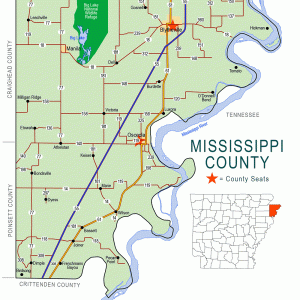calsfoundation@cals.org
Etowah (Mississippi County)
| Latitude and Longitude: | 35°43’44″N 090°13’56″W |
| Elevation: | 230 feet |
| Area: | 5.94 square miles (2020 Census) |
| Population: | 254 (2020 Census) |
| Incorporation Date: | May 1, 1996 |
Historical Population as per the U.S. Census:
|
1810 |
1820 |
1830 |
1840 |
1850 |
1860 |
1870 |
1880 |
1890 |
1900 |
|
– |
– |
– |
– |
– |
– |
– |
– |
– |
– |
|
1910 |
1920 |
1930 |
1940 |
1950 |
1960 |
1970 |
1980 |
1990 |
2000 |
|
– |
– |
– |
– |
– |
– |
– |
– |
– |
366 |
|
2010 |
2020 |
|
|
|
|
|
|
|
|
|
351 |
254 |
|
|
|
|
|
|
|
|
Etowah is a town in Mississippi County. It is located on State Highway 136 about fifteen miles west of Osceola (Mississippi County).
The first inhabitants of Mississippi County were Native Americans who established villages and built mounds at various sites around the county. When European explorers first traveled through the area, they found a swamp with many cypress trees. The land under the swamp was very fertile, but no efforts were made to remove the trees and drain the swamp until late in the nineteenth century. One Civil War event took place in the Etowah area, according to a monument that was dedicated in 2010. An expedition of 100 soldiers from the Second Missouri Artillery set out from Osceola on April 5, 1864, to fight guerrillas operating in the area. Around 3:00 the next morning, those guerrillas attacked the expedition, and a gunfight ensued. The Union artillery reported two casualties. The event described on the monument is most likely the Skirmish at Pemiscot Bayou.
Frank Johnson owned high land in the Etowah area when the Chapman and Dewey Lumber Company arrived in 1890 to begin harvesting the cypress trees. Workers from Tennessee, Missouri, Illinois, Indiana, and other states arrived to participate in the logging operation.
By 1902, enough workers and their families were living in the area that a post office was sought. The first name proposed was Jackson’s Island, but the postal service refused permission for the name, since it was similar to other named post offices in Arkansas. Rosa and Roosevelt were considered as names, but Etowah was eventually chosen. Local lore claims that the expression “E to wah” was shouted by a Native American riding a horse through the settlement, but no Native American language is known in which that expression has any meaning.
As the land was cleared of trees, lumbermen turned to farming. Edward Samuel Wildy, an Illinois farmer, purchased some of the cleared land and led the movement to create drainage ditches to claim land for farming. The community had a sawmill, a grist mill, a cotton gin, a doctor, a school, and a store within a few years of gaining its post office. In 1912, Robert Wilmoth opened the commissary that became the main store serving the residents of the area. Crops grown in the rich farmland included cotton, corn, and alfalfa. Farmers also raised hogs. The community was badly struck by the influenza epidemic around 1918, and many unmarked graves in the nearby cemetery are a result of the massive loss of life during that short time.
Electricity began to be provided in Etowah in 1935. At that time, a theater and a dance hall were built. School consolidation eventually closed the school in Etowah. The community incorporated as a town in 1996 in order to provide municipal services (including a fire department) to its residents.
The population of Etowah was 366 in 2000 and 351 in 2010, but by 202o the population had fallen to 254; nearly all the residents are white. The town remains agriculturally based. In addition to the post office and fire department, it also has several stores and churches. A barn on the Wildy farm and the nearby cemetery are on the National Register of Historic Places. On December 27, 2023, a 3.6 magnitude earthquake struck the area with an epicenter 3.5 miles northeast of Etowah, but no damage was reported.
For additional information:
Carpenter, Stanley D. “Lessons from an Arkansas Master Farmer; Ed Wildy Cut a Road to his Farm.” Delta Historical Review 4 (Summer 1992): 14–15.
Edrington, Mabel F. History of Mississippi County, Arkansas. Ocala, FL: Ocala Star-Banner, 1962.
Wells, Eunice. “Etowah, Arkansas.” Delta Historical Review 2 (Summer 1990): 22–28.
Steven Teske
Butler Center for Arkansas Studies
 Mississippi County Map
Mississippi County Map 




Comments
No comments on this entry yet.